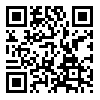Mon, Dec 15, 2025
[Archive]
Volume 23, Issue 3 (March 2025)
IJRM 2025, 23(3): 225-240 |
Back to browse issues page
Download citation:
BibTeX | RIS | EndNote | Medlars | ProCite | Reference Manager | RefWorks
Send citation to:



BibTeX | RIS | EndNote | Medlars | ProCite | Reference Manager | RefWorks
Send citation to:
Meamar F Z, Savabi-Esfahani M, Farajkhoda T. Prenatal screening of Down syndrome in assisted reproductive techniques pregnancies: A systematic review. IJRM 2025; 23 (3) :225-240
URL: http://ijrm.ir/article-1-3424-en.html
URL: http://ijrm.ir/article-1-3424-en.html
1- Department of Midwifery and Reproductive Health, Faculty of Nursing and Midwifery, Reproductive Sciences and Sexual Health Research Center, Isfahan University of Medical Sciences, Isfahan, Iran.
2- Department of Midwifery and Reproductive Health, Faculty of Nursing and Midwifery, Isfahan University of Medical Sciences, Isfahan, Iran.
3- Research Center for Nursing and Midwifery Care, Non-Communicable Diseases Research Institute, Department of Midwifery, School of Nursing and Midwifery, Shahid Sadoughi University of Medical Sciences, Yazd, Iran. ,farajkhoda_t@yahoo.com
2- Department of Midwifery and Reproductive Health, Faculty of Nursing and Midwifery, Isfahan University of Medical Sciences, Isfahan, Iran.
3- Research Center for Nursing and Midwifery Care, Non-Communicable Diseases Research Institute, Department of Midwifery, School of Nursing and Midwifery, Shahid Sadoughi University of Medical Sciences, Yazd, Iran. ,
Abstract: (802 Views)
Background: The interpretation of Down syndrome screening results in assisted reproductive technology (ART) pregnancies is challenging. Despite the high psychological burden that false positive results impose on parents, studies that have addressed interpretation of both serum and sonographic markers in both rounds of screening for Down syndrome diagnosis in post-ART pregnancies are limited.
Objective: This review study investigated the types of serum screening and imaging for prenatal diagnosis of Down syndrome in ART pregnancies to know and correctly interpret the results of prenatal screenings in these pregnancies.
Materials and Methods: In this systematic review, an extensive search was conducted in Persian and English in PubMed, Web of Science, Scopus, SID, and Google Scholar without any time limit until January 2024 using appropriate keywords. PRISMA guideline, STROBE, and CONSORT checklists were used.
Results: Review of 30 articles showed in the first screening, pregnancy-associated plasma protein-A was significantly lower than normal values compared to spontaneous pregnancies, while free beta-human chorionic gonadotropin, especially in the in vitro fertilization (IVF) and intracytoplasmic sperm injection (ICSI) was significantly higher. Some studies also indicated an increase in nuchal translucency in the first trimester of pregnancies resulting from ART. Biochemical markers of second screening, in some studies, an increase in inhibin-A, a decrease in α-fetoprotein, and unconjugated estriol were evident compared to normal values.
Conclusion: Marker levels may be different for the presence of ovulation-stimulating hormones, multiple corpora lutea, twins or multiplets, type of IVF, and changes in egg cytoplasm in ICSI. Study suggests concentration of maternal serum markers, especially free beta-human chorionic gonadotropin and pregnancy-associated plasma protein-A, should be adjusted differently for each ART (IVF and ICSI separately).
Objective: This review study investigated the types of serum screening and imaging for prenatal diagnosis of Down syndrome in ART pregnancies to know and correctly interpret the results of prenatal screenings in these pregnancies.
Materials and Methods: In this systematic review, an extensive search was conducted in Persian and English in PubMed, Web of Science, Scopus, SID, and Google Scholar without any time limit until January 2024 using appropriate keywords. PRISMA guideline, STROBE, and CONSORT checklists were used.
Results: Review of 30 articles showed in the first screening, pregnancy-associated plasma protein-A was significantly lower than normal values compared to spontaneous pregnancies, while free beta-human chorionic gonadotropin, especially in the in vitro fertilization (IVF) and intracytoplasmic sperm injection (ICSI) was significantly higher. Some studies also indicated an increase in nuchal translucency in the first trimester of pregnancies resulting from ART. Biochemical markers of second screening, in some studies, an increase in inhibin-A, a decrease in α-fetoprotein, and unconjugated estriol were evident compared to normal values.
Conclusion: Marker levels may be different for the presence of ovulation-stimulating hormones, multiple corpora lutea, twins or multiplets, type of IVF, and changes in egg cytoplasm in ICSI. Study suggests concentration of maternal serum markers, especially free beta-human chorionic gonadotropin and pregnancy-associated plasma protein-A, should be adjusted differently for each ART (IVF and ICSI separately).
Keywords: Down syndrome, Prenatal diagnosis, Maternal serum screening tests, Assisted reproductive technique.
Type of Study: Review Article |
Subject:
Fertility & Infertility
Send email to the article author
| Rights and permissions | |
 |
This work is licensed under a Creative Commons Attribution-NonCommercial 4.0 International License. |







